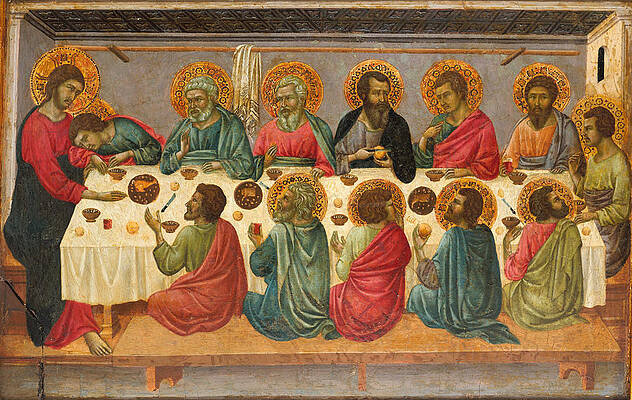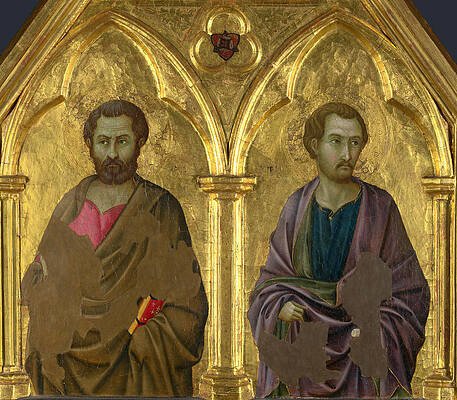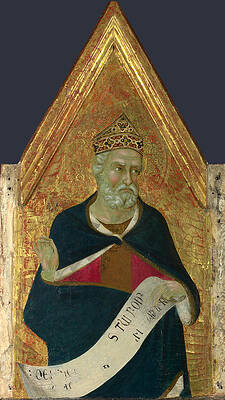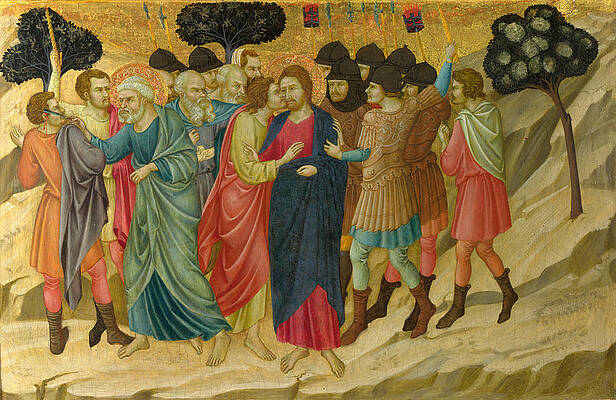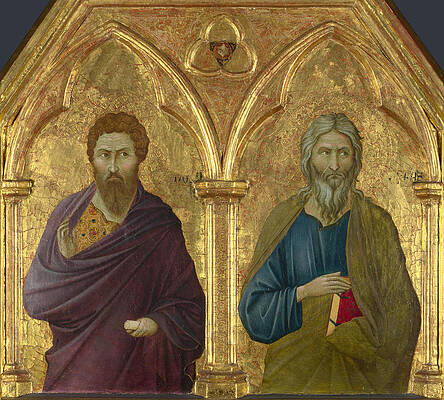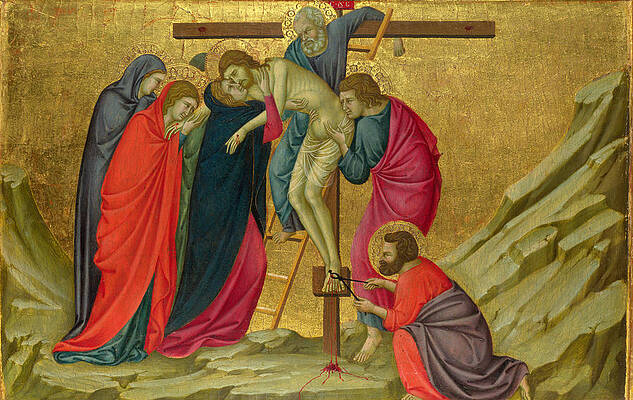Ugolino di Nerio
Paintings
The Last Supper
Saint Simon and Saint Thaddeus
Moses
David
The Betrayal of Christ
The Resurrection
Saint Bartholomew and Saint Andrew
The Way to Calvary
The Deposition
Isaiah


Fine Art Prints | Greeting Cards | Phone Cases | Lifestyle | Face Masks | Men's , Women' Apparel | Home Decor | jigsaw puzzles | Notebooks | Tapestries | ...
Ugolino di Nerio (1280? – 1349) was an Italian painter active in his native city of Siena and in Florence between the years 1317 and 1327.
He was a follower of Duccio di Buoninsegna, from whose Maestà some of his scenes are clearly derived. He was a leading master who contributed to the spread of Sienese painting in Florence by earning commissions to paint in the two main basilicas there, Santa Maria Novella and Santa Croce.
Biography and works
Nerio was born around 1280 in Siena to a family of painters. His father as well as his siblings, Guido and Muccio, were artists. His only known signed work is his altarpiece for the main altar of Saint Croce, dated around 1325; the signature has been lost but is recorded by Vasari. The work was moved from the main altar in 1566 to make way for a ciborium designed by Vasari.[1] It was reassembled in the friars' dormitory where it remained until, at some time around the beginning of the 19th century,[2] it was broken up and the surviving parts sold to William Young Ottley, an English collector. Today the panels are scattered in several museums around the world; the National Gallery in London has eleven. Studies of this work have resulted in putative reconstructions.[1]
He emerged as an independent master around 1315. His early paintings like the Madonna Contini Bonaccossi in the Pitti Palace, are painted in a style drawn from that of Duccio, but from about 1320 a distinct mature style emerges, spiritual and elegant. His choice of brighter colours was perhaps influenced by Simone Martini. Evidence of di Nerio’s fondness for painting pious subject matter can be seen in his iconic depictions of Saint Mary Magdalene and Saint Louis of Toulouse, which were both done in 1328. Both of these paintings utilize the rich and vibrant colors that he was known for taking advantage of, especially since the dominant colors in these two particular pieces are bright red and gold. These paintings are timelessly cherished by people around the world today due to di Nerio’s noble tribute towards the great saints and they currently reside in the Legion of Honor in San Francisco. The altarpiece for Santa Croce was the most important commission in a series of works that the Franciscans entrusted to him; at least eight polyptychs have survived in parts. Other important polyptychs are in the Cleveland Museum of Art and the Clark Art Institute, Williamstown, Massachusetts. His best-known Madonna is in the Chiesa della Misericordia, San Casciano in Val di Pesa; there is another in the Louvre.
According to Vasari he died in Siena.
Notes
Davies has a long account, pp. 108–113
Gordon, Dillian and Reeve, Anthony (1984). "Three Newly-Acquired Panels from the Altarpiece for Santa Croce by Ugolino di Nerio". National Gallery Technical Bulletin 8.
References
Davies, Martin. In: "National Gallery Catalogues: Catalogue of the Earlier Italian Schools". National Gallery Catalogues, London 1961, reprinted 1986, ISBN 0-901791-29-6
There is also a painting by this Italian Gothic painter in the National Gallery of Ireland(Dublin)("Propher Isaiah"). Also there is a painting by this painter in the Philadelphia Museum of Art("Prophet Daniel"). There is also a devotional theme painting by this painter in the Museum of Fine Arts in Boston('Virgin and Christ Child")
---
Fine Art Prints | Greeting Cards | Phone Cases | Lifestyle | Face Masks | Men's , Women' Apparel | Home Decor | jigsaw puzzles | Notebooks | Tapestries | ...
---
Artist
A - B - C - D - E - F - G - H - I - J - K - L - M -
N - O - P - Q - R - S - T - U - V - W - X - Y - Z
Retrieved from "http://en.wikipedia.org/"
All text is available under the terms of the GNU Free Documentation License


